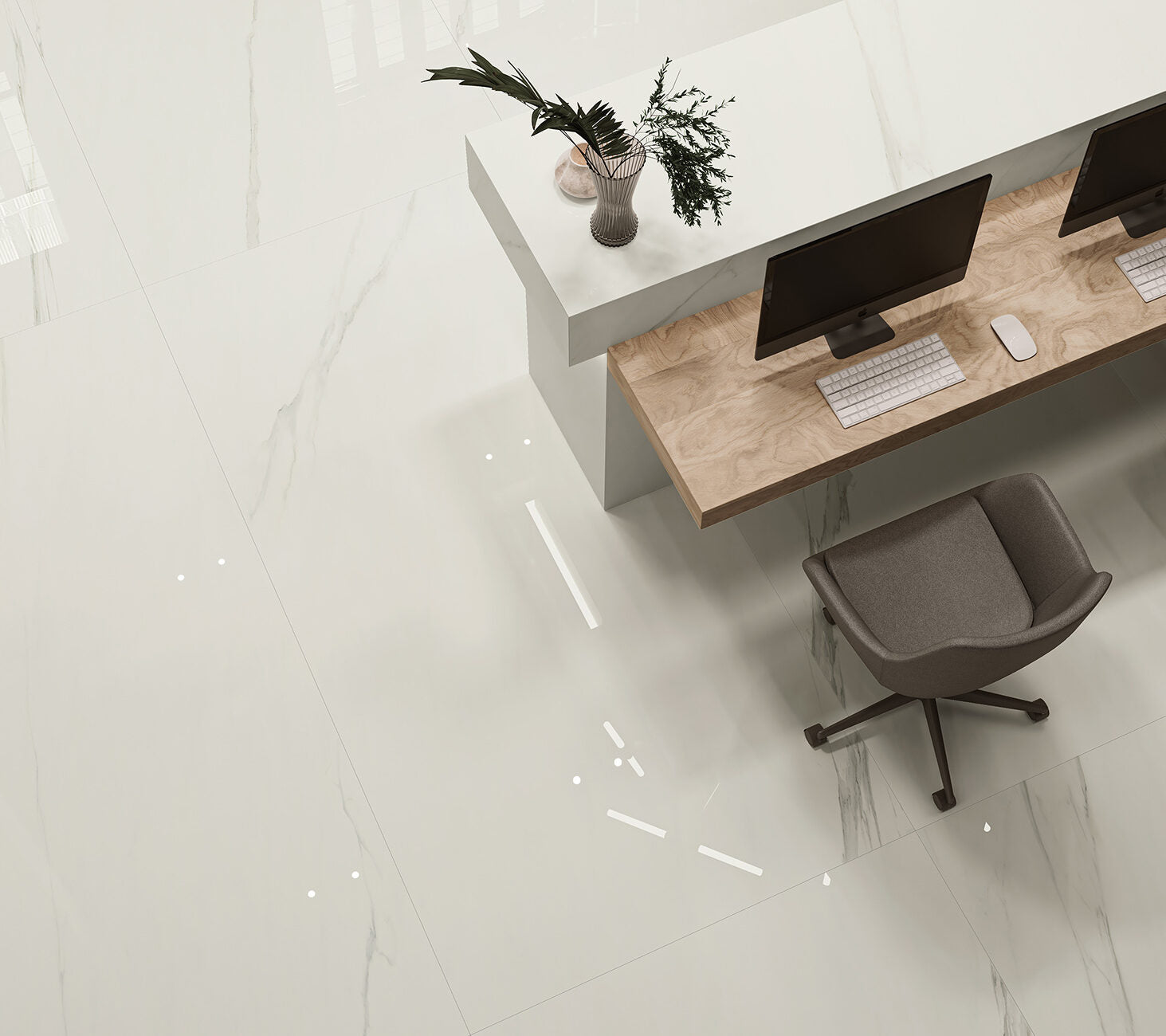When designing a tiled space, most of us focus on choosing the perfect tile, but grout—the material between tiles—plays a surprisingly big role in the finished look. The right grout color and finish can transform a room, making it feel seamless, adding bold contrast, or lending a subtle elegance. Here’s everything you need to know about selecting the ideal grout for your project, plus some useful tips on application and maintenance.
The colour of your grout can significantly impact the appearance of your tiles. Matching grout colors to tiles creates a seamless, unified look, especially useful in smaller spaces, where a lack of defined lines can make the room feel larger and brighter. Light-colored tiles paired with similar grout shades reflect more light, contributing to an airy, open effect. In contrast, choosing a grout color that contrasts with your tiles can give a bolder look, emphasizing the shape of each tile and bringing a graphic feel to the space. This is particularly popular for classic layouts like subway tiles, where the distinct lines create visual interest. For a balanced look, neutral grout colors, such as light grey or beige, provide a middle ground. These shades work well with various tile colors, giving a harmonious look without overpowering the tiles, making them ideal for high-traffic areas where practicality is key.
Grout finish, as well as color, plays a role in both the look and durability of your tiled surfaces. Sanded grout has a coarser texture and is often used for wider grout lines (around 1/8 inch or more). It’s particularly durable and resists shrinkage, making it a good choice for high-traffic areas and larger tiles. However, sanded grout is more porous, so applying a sealer is essential to prevent staining and keep it looking fresh. On the other hand, unsanded grout has a smooth finish and is better for narrow grout lines, often used with smaller tiles like mosaics or for wall applications. Unsanded grout adheres well on vertical surfaces, making it ideal for bathroom walls and splashbacks where a refined finish enhances the tile design.
Your grout choice should reflect the style of your tiles, as different combinations create unique effects. White tiles, for instance, are versatile and lend themselves to various grout pairings. Using white grout with white tiles results in a clean, minimalist look, perfect for modern spaces, while grey grout offers a softer contrast that adds depth and doesn’t show dirt as easily. Black grout with white tiles, by contrast, gives a bold, graphic edge, a popular choice in modern and industrial designs. Dark tiles paired with dark grout provide a sleek, uniform look suited to contemporary interiors. Alternatively, contrasting dark tiles with a lighter grout can make each tile stand out, creating a textured, eye-catching effect. For patterned or mosaic tiles, a neutral grout like beige or light grey offers balance without overshadowing the tile’s intricate designs, allowing the tile to remain the focal point.
Before making your final decision, it’s always wise to test grout in a small, discreet area. Grout color can vary slightly once it dries, so testing first ensures you’ll be happy with the outcome. Many tile stores offer grout samples specifically for this purpose. Once the grout is in place, consider sealing it. Sealing grout is especially important in areas with high moisture, like kitchens and bathrooms, as it helps prevent stains and keeps the grout looking new. For high-traffic areas, consider using stain-resistant or epoxy grout, which is especially durable and easier to maintain.
Keeping grout clean is essential to preserve its look and longevity. Regularly clean grout with a mild solution, such as baking soda and water, and avoid harsh cleaners that could erode the material over time. For deeper cleaning, a soft brush, like an old toothbrush, can be very effective for scrubbing grout lines without damaging them.
Grout colors each offer unique effects. White grout is fresh and clean, although it may show dirt more easily, while grey grout balances visibility with practicality, complementing both light and dark tiles. Black grout provides a bold, modern feel and effectively hides dirt, although it can look heavy in smaller spaces. Beige or taupe grout has a soft, neutral appearance that complements a range of tile colors, lending a warm effect without overwhelming the design.
Choosing the right grout can elevate the entire look and feel of your space, allowing your tiles to shine while ensuring the practicality needed for lasting beauty. Whether you prefer a seamless look or bold contrast, the right grout color and finish will bring out the best in your tiles, making the space feel intentional and complete.





